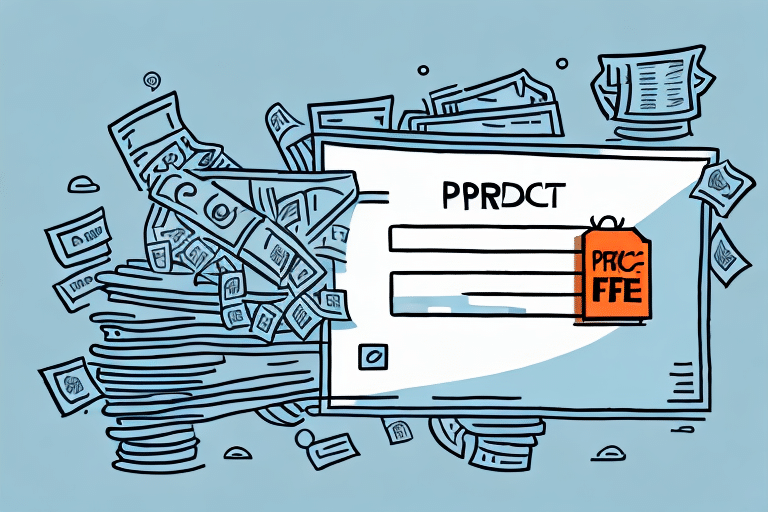What Is the Landed Price?
When it comes to international trade, the landed price is a crucial factor to consider. The landed price refers to the total cost of importing a product, including all expenses incurred from the point of origin to the final destination. It encompasses costs such as transportation, insurance, taxes, duties, and tariffs. Understanding the landed price is essential for any importer aiming to manage their expenses effectively and make informed business decisions.
Importance of the Landed Price in International Trade
Accurately determining the landed price is vital for importers as it allows for precise calculation of expenses and determination of the final product cost. This information is used to set competitive prices, create budgets, and make strategic sourcing decisions. Without a clear understanding of the landed price, importers risk underestimating costs, which can lead to reduced profit margins or financial losses.
Furthermore, a comprehensive understanding of the landed price empowers importers to negotiate better deals with suppliers. Knowing the true cost of a product enables importers to seek discounts, better payment terms, or other favorable conditions, thereby enhancing profit margins and maintaining competitiveness in the market.
Moreover, understanding the landed price assists importers in complying with customs regulations, thereby avoiding potential fines and penalties. Customs duties and taxes are typically based on the landed price; thus, accurate calculations are necessary to ensure proper compliance and avoid legal or financial repercussions.
Components of the Landed Price
The landed price is composed of several key components:
- Product Cost: The base price paid to the seller for the product.
- Transportation Costs: Expenses related to shipping, including freight charges and shipping fees.
- Insurance: Costs to insure the goods during transit against loss or damage.
- Customs Duties and Taxes: Government levies imposed on imported goods.
- Additional Fees: This may include handling fees, brokerage fees, and other miscellaneous charges associated with importing.
Another critical factor affecting the landed price is the exchange rate between the importer's and exporter's currencies. Fluctuations in currency values can impact the total cost, particularly if the importer's currency weakens against the seller's currency, leading to a higher landed price.
The mode of transportation also plays a significant role in determining the landed price. For example, while air freight is faster, it is generally more expensive than sea freight. The choice of transportation impacts both the cost and the delivery time, thereby affecting the landed price.
Calculating the Landed Price
Calculating the landed price involves accounting for all costs associated with importing a product. The basic formula includes:
- Cost of the Product (FOB Price): The price agreed upon with the supplier.
- Add: Transportation Costs: Include freight charges, shipping fees, and any additional transportation-related costs.
- Add: Insurance: Costs to cover the goods during transit.
- Add: Customs Duties and Taxes: Based on the importing country's tariff rates.
- Add: Additional Fees: Such as handling, brokerage, and any other miscellaneous costs.
For example, if the FOB price of a product is $1,000, transportation costs are $200, insurance is $50, customs duties and taxes are $150, and additional fees are $50, the landed price would be $1,450.
Importers can use online landed price calculators or consult with logistics professionals to accurately estimate these costs. It's important to consider factors like exchange rate fluctuations and potential changes in customs duties that can affect the landed price.
Avoiding Common Mistakes in Landed Price Calculation
When calculating landed price, importers should be cautious to avoid several common mistakes:
- Incomplete Cost Accounting: Failing to include all applicable costs, such as insurance, handling fees, and miscellaneous charges, can lead to inaccurate landed price calculations.
- Underestimating Transportation Costs: Not accounting for potential increases in freight charges or additional transportation fees can result in higher than expected landed prices.
- Ignoring Exchange Rate Fluctuations: Changes in currency exchange rates can significantly impact the landed price, especially for large transactions.
- Non-Compliance with Regulations: Overlooking the costs associated with regulatory compliance can lead to fines and unexpected expenses.
By meticulously accounting for all potential costs and staying informed about market changes, importers can avoid these common mistakes and ensure accurate landed price calculations.
The Impact of Tariffs and Taxes on Landed Price
Tariffs and taxes are substantial components of the landed price. Governments impose these levies to regulate imports, protect domestic industries, and generate revenue. The specific tariffs and taxes applicable can vary based on the product category and the importing country's policies.
For instance, the World Trade Organization (WTO) provides a framework for understanding international tariff structures and agreements. Importers should leverage such resources to remain informed about prevailing tariff rates and exemptions that may apply to their products.
Additionally, value-added tax (VAT) and goods and services tax (GST) may be applicable depending on the importing country's tax regulations. These taxes are calculated based on the landed price and must be accounted for to avoid legal complications and ensure accurate cost estimations.
Importers can work with customs brokers or consult official government resources to understand the specific tariffs and taxes that apply to their products, thereby accurately determining the landed price.
Strategies to Reduce Landed Price
Reducing the landed price can significantly enhance profit margins for importers. Here are some effective strategies:
- Negotiate with Suppliers: Seek lower product prices or better payment terms to reduce the base cost of goods.
- Consolidate Shipments: Combining multiple orders into a single shipment can lower transportation costs through economies of scale.
- Optimize Transportation: Choose cost-effective shipping methods that align with delivery requirements.
- Leverage Free Trade Agreements: Utilize FTAs to reduce or eliminate tariffs on eligible products.
- Use a Freight Forwarder: Professional freight forwarders can negotiate better shipping rates and manage logistics efficiently.
- Manage Currency Exchange: Monitor exchange rates and consider hedging strategies to mitigate currency risks.
Conclusion: The Crucial Role of Landed Price in International Trade
Understanding the landed price is fundamental to the success of international trade operations. It allows importers to comprehensively assess their total costs, set competitive pricing, and make strategic sourcing and budgeting decisions. Accurate landed price calculations prevent underestimation of expenses, help in negotiating favorable terms with suppliers, and ensure compliance with customs regulations.
By mastering the components and calculation of landed price, and employing strategies to minimize costs, importers can enhance their profit margins and maintain a competitive edge in the global marketplace. As international trade continues to evolve, staying informed about factors affecting the landed price remains essential for sustained business success.






















